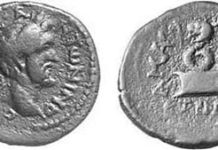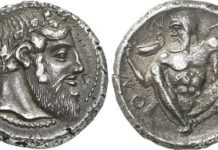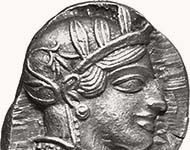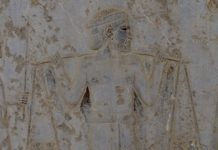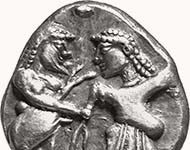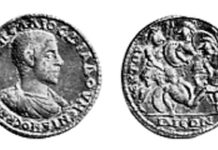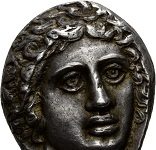Alexander of Abonuteichos – a lesson from Asia Minor about gullibility in the 2nd cent. A. D.
You are one of those people who believe than there are more things in heaven and earth than are dreamt of in your philosophy? Well, you are in accordance with a deep-seated tradition and can appeal to the fact that already in antiquity there were people who thought the same as you. ..
Sicilian Mosaic Part 12: Naxos and Leontinoi
Naxos was the first Greek city founded on Sicily. Today we take a look at its coins, as well as the coins of Leontinoi, founded by Naxos, and Catane.
The Delian League and the Athenian Money
In 479 BC the Greeks defeated the Persians at Plataiai. At that time nobody dared to hope that the fight was so soon to end. On the contrary, every Greek city was afraid of the Persian king, who had vast resources at his disposal. He was feared to raise another army in order to conquer the whole of Greece. Something had to be done to prevent that.
Great is Artemis of the Ephesians
On his visit to Ephesus, St. Paul was in imminent danger to be lynched. Why was it that the Ephesians felt so threatened by this herald of a new god? Were they more pious than other Greeks? They were, in a way, since they lived on their religion…
Greek mercenaries in Persian service
In auction 304, the Osnabrück auction house Künker offers a series of early Persian coins showing portraits of kings and satraps, including four of the enigmatic tetradrachms of Athenian type with small portraits or Aramaic lettering. They are likely to have been produced under Persian orders for paying Greek mercenaries.
Dionysos – A God of the Greek Religion of Experiences
Most of us react uncomprehendingly while reading the Greek myths. We can't imagine that once rational human beings were able to believe in gods who behaved like characters invented for a soap opera on TV. Legends tell us about adultery, violation, theft, intrigue and fraud.
“Sing, Muse, of the rage of Peleus’ son Achilles…”
You believe that Paris abducted Helena? Which was why the Greek destroyed Troy? What if it was completely different? The later Trojans in Roman Imperial Times adhered to an entirely different version of the story – and so they celebrated their hero Hector on their coins.
Helios, the Colossus of Rhodes – and the Rhodian tetradrachms
Ten Rhodians, ten ships, says an ancient proverb. It tells of the source of the riches of this island, which had one of the most important harbors of the ancient world. It was protected by the Colossus of Rhodes, a statue of Helios, who is also depicted on Rhodian coins.
The Colts of Corinth
This beautiful early stater of Corinth bears Pegasus on its obverse. The winged horse was the symbol of Corinth and each citizen of this important seaport felt the whole city and himself connected with this winged horse. Why did he do so and how did this connection come into being?
Bread for Tarsus
In the 3th cent., Asia Minor was famine-stricken. The city of Tarsus scored a coup that made the emperor leave the grain necessary for survival to it at a cheap rate. A coin tells of how that was achieved.



